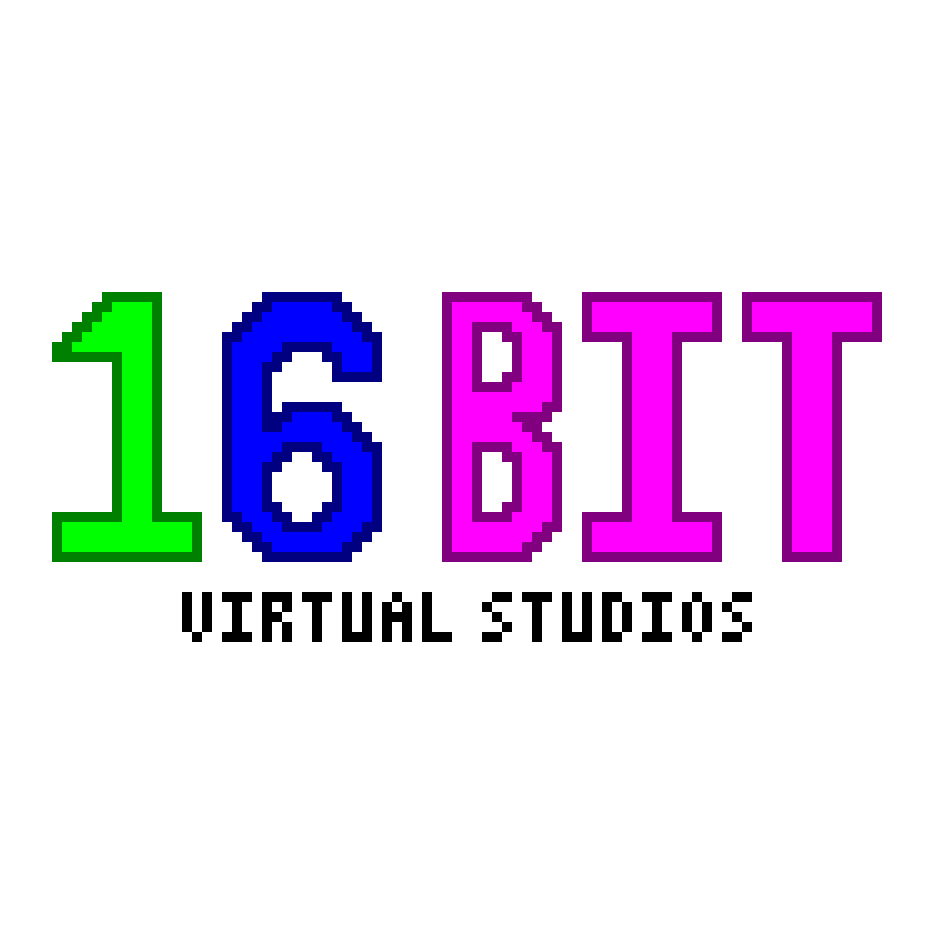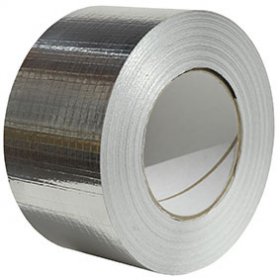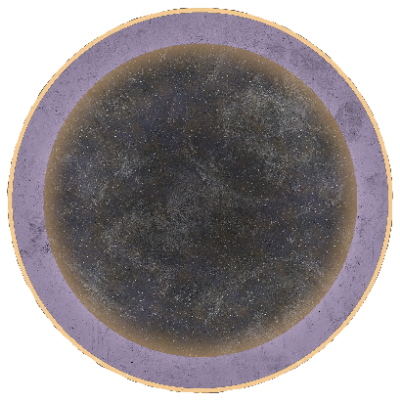Okay I know this sounds like click bait but trust me switching over to linux requires you to first master the open source software that you will be replacing your windows/mac counterparts with. Doing it in an unfamiliar OS with no fallback to rely on is tough, frustrating and will turn you off of trying linux. DISCLAIMER: I know that some people cannot switch to linux because open source / Linux software is not good enough yet. But I urge you to keep track of them and when so you can know when they are good enough.
The Solution
So I suggest you keep using windows, switch all your apps to open or closed source software that is available on linux. Learn them, use them and if you are in a pinch and need to use your windows only software it will still be there. Once you are at a point where you never use the windows only software you can then think of switching over to linux.
The Alternatives
So to help you out I’ll list my favorites for each use case.
MS Office -> Only Office
- Not for folks who use obscure macros and are deep into MS Office
- Has Collaboration and integration with almost all popular cloud services…
- Has a MS Office like UI and the best compatibility with MS Office.
Adobe Premiere -> Da Vinci Resolve
- It is closed source but available on linux
- Great UI, competitive features and a free version
Outlook -> Thunderbird
- Recently went through massive updates and now has a modern design.
- Templates, multi account management, content based filters, html signatures, it is all there.
Epic Games, GOG, PRIME -> Heroic
- Easy to use, 1 click install, no hassel
- Beautiful UI
- Automatically imports all the games you have bought
PDF Editor -> LibreOffice Draw
- Suprisingly good for text manipulation, moving around images and alot more.
- There might be slight incompatibilities (I haven’t noticed anything huge)
- But hey, it’s free
How do I pick a distro there are so many! NO
So finally after switching all the apps you think you are ready? Do not fall into the rabbit hole of changing your entire OS every two days, you will be in a toxic relationship with it.
I hate updates and my hardware is not that new
- Mint - UI looks a bit dated but it is rock solid
- Ubuntu - Yes, I know snaps are bad, but you can just ignore them
I have new hardware but I want sane updates
- Fedora
- Open Suse Tumbleweed
I live on the bleeding edge baby, both hardware and software
- Arch … btw
Anyways what is more important is the DE than the distro for a beginner, trust me. Gnome, KDE, Cinnamon, etc. you can try them all in a VM and see which one you like.
SO TLDR: Don’t switch to linux! Switch to linux apps.
This is how switched, though I’d recommend properly platform agnostic software (Windows, Mac, and Linux support) since if you don’t find Linux proper works for your workflow, you could switch to a Mac.
Another thing which helped me was switching my Laptop first before my Desktop since if I had problems (which I did) I could loose my laptop and not worry about data loss.
As of now, I am 2 year with Linux on my laptop and 6 months on my desktop with no noticeable difference between my Windows experience and Linux.
I just want to add, obviously I am not an expert in every field in the world and cannot find an alternative for everything but if you do want to do some research sites like alternativeto.net are great resources.
My one amendment would be - forget Ubuntu and variants, just Debian is fine with older hardware. Less headaches and hassles, and some snaps.
I’d even say Mint Debian Edition over Ubuntu.
Last time I checked, Davinci Resolve (which is fantastic, btw) is only officially supported on CentOS for some reason. There are guides/scripts that allege to make it work on other distros, but I had zero luck with them on Mint when I tried like a year ago.
It can also be extremely picky about what hardware it will run on. I actively use 3 different editors based on what tasks the project calls for since some things are just easier/faster with different programs. Kdenlive and Olive will get 90% of stuff done easily in my (admittedly limited) experience and installation for either is just using your package manager.
Oh nice-- Maybe those would be better recommendation for this purpose, then. I love Resolve, but I wouldn’t want to tell a new Linux user “It doesn’t work on your distro, but you can MAKE it work if you are computers enough.”
Steam is only Officially supported on Ubuntu. Doesn’t seem to have hurt it any.
Good 👍 I’m glad that works for people. I had alot of trouble getting Resolve to run on Mint.
Great post! Completely agree! I will add that for filling out PDF Forms, Okular is amazing!
I don’t understand the difficulty. My kid who used Windows for at least 7 years installed Ubuntu and just started using it. Why is this difficult for people? I helped him boot the computer from a USB stick and that’s it.
Here is the app store, install programs from here.
Ok.
Yup, I think a lot of people just use their web browser for everything, and they can definitely just switch. Outside of work, how many non-techies have set up their email to use a native program? Very few, in my experience.
I think documents are sometimes the exception, since there’s a sizable (perhaps older) group that like to use Word for everything.
All the tech literacy programs for parents also basically ended up only teaching office software, for some reason.
I think some folk want to pretend using Linux is hard so that they can feel more… Uh… Technical for using it.
It’s actually hilarious how disconnected some Linux folks are lmao
The average person
- doesn’t know what an operating system is
- can barely work with windows, has had many struggles learning windows
- is scared of change
- doesn’t know about the existence of a BIOS
- will never be able to boot anything else but default by themselves
- doesn’t know how to troubleshoot anything about computers
- literally does not know or care about the existence of Linux
I know these things are changing, but anyone saying people are able to switch to Linux by themselves and its easy and doable for the average person is fucking delusional, this post is one of the most reasonable takes I’ve seen on the sub
The average old person perhaps. Young people are not afraid of change in most cases. They don’t have that barrier of thinking learning something new is difficult. It just happens as they click around. And they have friends, and they ask their friends. Just like we did when we were young. I don’t think you asked your dad how to use windows… :)
I honestly think that if you would have Linux on laptops and you gave it to young people, they would have no problems finding out how to install programs and use the web browser. And that’s the start of the learning experience.
Sure, give a somewhat intelligent person between 20 and 40 a PC with Linux on it and they’ll figure it out. However, that doesn’t mean they have the patience of finding out how to install Linux in the first place. And also, they‘ll figure out how to install apps, sure. Until they try to download the installer.exe for Microsoft Office because why would they know that it won’t work.
The problem isn’t, that they couldn’t figure it out, the problem is most people just want a working computer and not relearn what they already know or learn what an operating system is at all.
(And also, I remember reading some study, that a lot of late Gen Z and younger (the ones that didn’t grow up with Windows XP or earlier anymore) are actually less tech savvy than older generations because they’re used to not really having to troubleshoot tech)
Truth be told, being gen Z myself, I think it’s less about what Windows version they used and more about the fact that most primarily use mobile phones these days. Funny enough, the two other gen Z Linux users I’ve met were Arch users, while I’m a Debian guy.
Couldn’t have said it better, and I’ve seen the same article as well!
Funny story a coworker told me is his father kept breaking his windows install in the weirdest ways, so he asked him if he’d try Linux and was very reluctant. He showed him his laptop and he said “Oh yeah I used this at work for 30 years!”
Dunnily enough, I got into Linux through my grandfather (now in his 70s), who had been on and off using Linux since redhat. Although, by now, my tech and Linux knowledge surpassed his (at least in applications relevant in this century) because he’s scared of the internet
Your point is proven by the adaptation of chromebooks, kids have no issue using them and neither should anyone else. It’s not a Linux thing, it’s a “what did you use the most”-thing. Some distros are ready to be shipped to consumers, bought a laptop with Linux pre-installed in 2018 (XPS 13).
You’ll see mainstream use if stores are selling them in-store to consumers. You’re up against the likes of Google, Microsoft or Apple when you try to pull that off.
PS: I believe in mainstream Linux use because money has a tendency to ruin everything, just think it will be much slower than us enthusiasts would want.
If all you do is browse the web, as is the case for a a lot of people, the OS does not matter. Heck, my neighbor does not even have a computer, does everything on his phone.
@uranibaba @kernelle , well, yes and no. Yes, visiting most websites will absolutely not matter. Streaming however, does matter. Streaming from services is either not supported for some services and only supports lower resolutions. I am not sure which are supported or not currently, I remember Max not working on Linux, it might have worked with OS spoofing.
Edit: I dropped Max a while ago and haven’t tried to use it for a long time after it initially didn’t work while I had the service.
SkyShowTime also seem to not work on Linux.
On streaming, a partial (but admittedly not full) replacement is a sufficiently well-stocked local library. Just get the Bluray libraries (libaacs, libbdplus, etc) set up, throw in a keydb.cfg, and you’ve at least got some stuff. For me, there’s a local that keeps a good collection of Trek stuff (all the way to Lower Decks season 4 and Prodigy Season 1 from 2023), which is almost all I care about.
Exactly, in reality people will use what’s given to them. Just like windows, introduce it now and people would lose their fucking minds about how convoluted it is.
Transition costs are what we should be looking at, right now to install or use Linux you need someone with experience explaining it to you. Just like it was when PC’s were becoming a thing. Don’t have that person? Only alternative is MacOS or ChromeOS for them.
We can all get smart and snarky about “average persons” but then again, who says the OP was for average person.
Your “average” person is not even on Reddit, let alone Lemmy, and if by chance they stumble along they are probably not clicking posts like this.
So when you stop laughing from “hilarious disconnected Linux folks”, maybe sleep on it, then try thinking about this.
In context of this community and this thread, no, Linux is not all that horrible compared to Windows.
then again, who says the OP was for average person
Nobody, the post is to aid us who are assisting other people to switch. I’m saying people here vastly overestimate the average persons ability AND willingness to actually switch, by themselves or assisted.
Linux is not all that horrible compared to Windows.
It is, in part because Linux is not beginner friendly but mostly because everyone is used to windows. Almost every program they’ve used is exclusive to it, which is why this post provides a path to eventually introduce them to Linux. Using Linux isn’t hard, using it the same way people are used to is. As is troubleshooting and installing 3rd party applications.
So when you’re done building strawmans, go touch some grass
I switched as a kid too, but that makes it really easy because I never ended up depending on a bunch of proprietary Windows only apps. I never learned stuff like Photoshop and Illustrator and Premiere, not even on pirated versions like most kids do. Photoshop CS2 technically ran under wine but the experience was so miserable I learned GIMP instead. My last Windows was XP.
The older you get the more “serious” software you have too, like tax stuff, the whole Windows-centered workflow at work. The deeper you are into the ecosystem the worse it is.
The issue I see over and over and over is not that using Linux in itself is that hard, it’s dealbreaker software and hardware. Oh your capture card isn’t supported. Your audio mixer’s not supported. It sucks. So basically what OP said: you have to switch to Linux friendly software first, then it’s basically just swapping the OS and not flipping your entire computing experience over.
Luckily, I don’t depend on Adobe stuff, but knowing some professional photographers, you sort of can’t live without Photoshop. I feel like GIMP has severely stagnated - many of the features are there, but buried, while non-destructive editing integral to a modern workflow seems eons away. (I find this weird, especially considering how good and mostly intuitive a project like Inkscape is - I find a lot of things easier than Illustrator.) I kind of want to learn GPU shaders and GPU compute (I’m mostly a Python guy with up to Calculus II experience, some bezier curve know-how, and more math on the way, for reference, for reference) so I could create a fast open graphics editor as backlash for Adobe’s AI buffoonery, though my project management skills aren’t great at the moment.
Yes, hardware support for things like video capture, that is the danger zone. :)
My mom is 80 years old and I got her on Mint years ago - mostly because I was tired of fixing the mistakes Windows let her make.
My mom is a walking disaster with computers but she got used to it and now she can’t mess up anything, and she doesn’t worry about messing up anything anymore too. If she can do it, anyone can do it.
I also wonder the future of immutable Linux. Right now it has pain points but maybe someday it will work reliability
90% of people who say they cant switch really mean they don’t want to. It’s really not about application availability, capability, or otherwise. It’s about it not being the same as what they have always done. NOTE: 97% of statistics are made up anyway.
The thing is alot of people who work really well in the windows environment and have been doing so for a while will now have to face both a new environment and new tools. Then there is the problem of time … If you are trying to work while also troubleshooting your OS with none of the tools that you know how to troubleshoot with it could be frustrating.
work while also troubleshooting
Let’s not pretend that most people know how to troubleshoot. only a little /s
So I suggest you keep using windows, switch all your apps to open or closed source software that is available on linux. Learn them, use them and if you are in a pinch and need to use your windows only software it will still be there. Once you are at a point where you never use the windows only software you can then think of switching over to linux.
This is what I did in the 2000s. At one point I used all open-source software and my Windows was themed like GNOME. One sunny day Wine got fixed for Warcraft TFT. And then I switched to Ubuntu 5.04. With that said, today with the current hardware and software, lots more is palatable to run in a Windows VM. My wife has used MS Office and Adobe software in VMware Player for a decade now. Recently switched her to virt-manager. It’s just damn reassuring to know you can run pretty much all non-graphics intensive Windows workloads on demand. Even interfacing with pretty much any USB hardware, which is important for dealing with various arcane hardware.
Was ready to downvote but this is actually a really good guide, well done OP! The one issue I will raise, though, because I faced it myself, is that as long as you’re still using Windows, it is way too easy to just go back to using the Windows programs not the open source ones. Only through switching to Linux can you really “throw yourself into the deep end” and force yourself to learn these new things. Microsoft has made themselves the “path of least resistance” (or at least that of “most momentum” for a reason) and if you’ve been using a computer for a while, it’s a lot easier to break the habits and realise the benefits by giving yourself no other option than it is by trying to discipline yourself into using the new options.
Agreed, this has been my experience as well. I tried switching to full time Linux multiple times. I had already used it on my laptop for years but on my desktop I kept going back to Windows because things on Windows just worked the way I wanted and thought that for some things there weren’t any Linux alternatives.
That was until two years ago I challenged myself to only use Linux for a month. I’ve been using Linux on my desktop ever since and only use Windows now and then to play a single game that doesn’t work on Linux due to anti cheat.
And Debian could be used instead of Mint. Almost all the Ubuntu support online applies, except no snap requirement.
Also, start using WSL for random things you do in GUI today to learn CLI/bash.
But yea, great guide.
Who wants to start a flame war? NixOS is a better bleeding edge distro than Arch. Nixpkgs has way more packages than Arch.
I wrote this for beginners … While you shouldn’t be installing arch either as a beginner but if your are up for it tools like the arch wiki and archisntall are still easier than learning nix os …
I have been using linux since years now and I have no idea what a nix is /j
Nix makes my head hurt
Ansible on desktop I could get on board with
Maybe, but arch is simpler
Is arch btw simpler than NixOS? I always thought that arch btw was on top of the difficulty food chain.
Arch is pretty simple. Anyone with an intermediate skill level could use it pretty easily, I reckon.
Never used it, only used Debian based versions. I tried my hand at Fedora and OpenSUSE but no apt made me change back. Not because it better (or worse, for all I know), just that I know apt and didn’t want to take the time to learn rpm etc.
Or, conversely, just switch to Linux.
Take an hour or so to have a look around the place.
Go on the internet if you have any questions.
People are smarter than you assume and if you want Linux to grow in popularity we need to stop pretending any if this is difficult.
This does not work for everyone. A lot of people will try to switch, but find one tool they are used to they cannot now use and are not used to the alternatives so feel frustrated when trying to use them for real work. Then get pissed off at Linux and switch back to windows.
This advice is more for people that are thinking about Linux but have some professional or semi professional or hobby workflow on their computers that they need to be productive in. It can be very hard for them to switch os and tooling they are used to with no way to fall back to what they know when they need to.
You will find most people don’t rely on these tools and they can doba quick check and decide to switch straight away. But ignoring this advice for the rest can make transitioning to Linux easier.
We need to stop pretending that switching tools that you rely on and have spent decades learning to be proficient in is a trivial task for everyone.
You are giving the average person too much credit. If you ask them what OS they are running, they are as likely to say ‘windows’ as they are to say ‘dell’
I think the most likely answer would be “what?”
This is good advice, but I would add having a bootable Linux distro on a usb, and using more and more until you find yourself not needing Windows, then move to Linux with just it or a dual boot configuration with Windows as a fallback
Old hardware runs better on Ubuntu than on Fedora or Tumbleweed? Nani?
No I meant it in the sense that for newer hardware mint and Ubuntu LTS usually ends up not having drivers or driver issues. I was setting up my girlfriend’s laptop which isn’t old but crap so I chose mint … It didn’t have the drivers for the trackpad so I had to switch to the edge iso. So what I was saying was if you have newer hardware run fedora or tumbleweed … Not the other way around
My concern with this take is that it positions the switch as all downsides. You do not get any of the Linux benefits, just the compromised experience on Windows. You may decide it is not worth it even before switching.
Dual booting is also an option.
In order to use dual boot, one must be able to set up dual boot. This guide is addressed towards people who have never used Linux.
If you’re lucky enough to have more than one device, then I’d just say use Linux on your secondary device. I used my Steam Deck as my PC for a month before I made the change.
Dual booting is done for you in the installer, at least for mint.
I know it has the ability to, but I don’t recommend it. I’ve recently commented on this so I’ll paste it here:
DO NOT dual boot as a beginner. I did this when I started and would screw up something with the bootloader and be unable to boot one of the OSs (data can still be copied off, but installed app data isn’t easily recovered). Being a noob at the time, I even accidentally wiped the wrong drive during a distro hop.
For a beginner I would recommend you remove your Windows SSD and keep it safe in a drawer. Or clone the drive first. Then you can mess around all you want while keeping your original SSD safe.if the data and OS/app installs are valuable then don’t fuck around learning a new system with the drive in situ. Certainly don’t try to learn to partition and dual boot off the same drive. The noob risk is just too high.
The major problem with dual-booting is if you get lazy and end up never booting the Linux install. Sure you can do most stuff on Linux but Windows does all your stuff, so you end up with “I might play after those YouTube videos” and boot into Windows to save the possible upcoming reboot. And then you’re always on Windows.
But it’s a very good option if you can manage to get yourself into the opposite situation: avoiding having to reboot into Windows and find workarounds and alternatives.
I have two applications that does not have a replacement for Linux, running Windows as a virtual machine is a great alternative as you don’t have to leave Linux (or reboot) to use them.
I would still say dual booting is the superior option, but that might be complicated for some people, so this is probably a good recommendation.
I would say: “Don’t switch to Linux. Just start with Linux and never use Windows or Mac in the first place”
Don’t have to get used to something if you’ve never used something else.




















